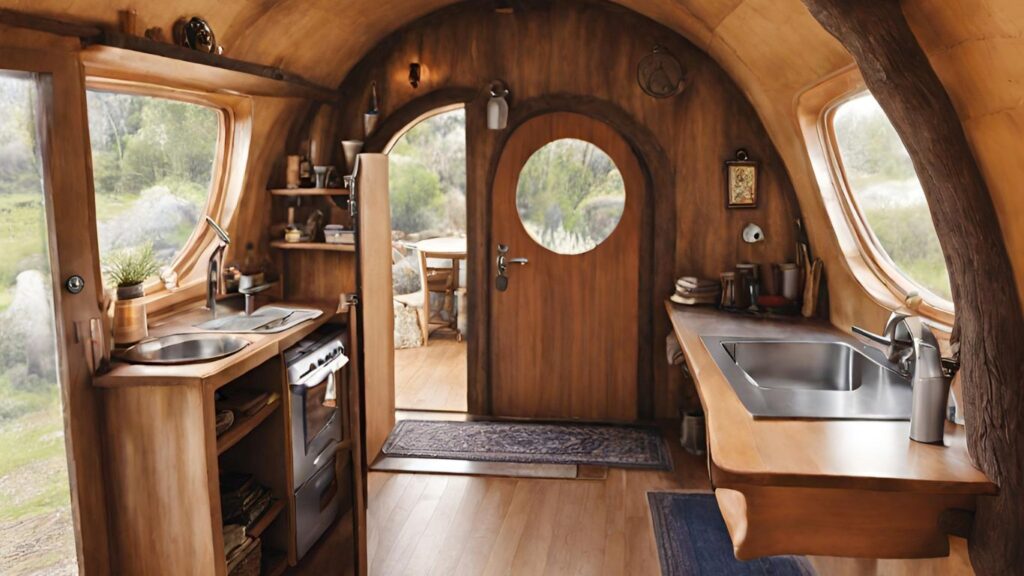
Why people are choosing Walmart’s barn-style tiny home
Walmart, the world’s largest retailer, has recently added a surprising product to its online catalog: a barn-style tiny home that can be delivered to your doorstep for less than $10,000.
The tiny home, which is manufactured by Best Barns, a company that specializes in wood shed kits, measures 12 x 20 feet and comes with a loft and a second floor. The buyer has to provide their own floor, shingles, and roof edges, as well as assemble the home themselves.
According to Walmart’s website, the home is “ideal for those who want to put their own ideas into making their houses look amazing.” The home also made House Beautiful’s list of “12 Prefab Tiny Homes That Come With Big Style.”
But what are the reasons behind this unconventional purchase? Why would someone choose to live in a tiny home instead of a conventional house or apartment?
There are many possible benefits and challenges of living in a tiny home. Some of the benefits are:
- Saving money on housing costs, utilities, taxes, and maintenance. A tiny home can cost as little as $10,000, compared to the average price of a single-family home in the US, which was $295,300 in November 2023, according to the US Census Bureau. A tiny home also consumes less energy and water, and requires less upkeep, which can lower the monthly bills and expenses.
- Reducing environmental impact by using less energy, water, and materials. A tiny home has a smaller carbon footprint than a conventional home, as it uses less resources and produces less waste. A tiny home can also be powered by renewable sources, such as solar panels or wind turbines, making it more eco-friendly and self-sufficient.
- Living a minimalist lifestyle by getting rid of clutter and focusing on experiences. A tiny home forces the owner to downsize their belongings and keep only the essentials, which can lead to a simpler and more organized life. A tiny home can also free up time and money for the owner to pursue their hobbies, passions, and travels, instead of being tied down by a mortgage or rent.
- Having more mobility and flexibility by being able to move the home to different locations. A tiny home can be transported on a trailer or a truck, allowing the owner to change their scenery and explore new places. A tiny home can also be installed on a variety of terrains, such as rural, urban, or coastal areas, depending on the owner’s preferences and needs.
However, living in a tiny home also comes with some challenges, such as:
- Finding a suitable place to park or install the home that meets the legal and safety requirements. A tiny home may not be allowed or welcomed in some areas, due to zoning laws, building codes, or neighborhood regulations. A tiny home owner may have to deal with permits, inspections, fees, or fines, depending on the local rules and authorities.
- Adjusting to the limited space and storage options. A tiny home offers less room for living, working, entertaining, or hosting guests. A tiny home owner may have to compromise on comfort, privacy, or convenience, depending on their lifestyle and expectations. A tiny home owner may also have to find creative solutions for storing their belongings, such as using multifunctional furniture, vertical space, or external storage units.
- Dealing with potential social isolation or stigma from living differently. A tiny home owner may face challenges in maintaining their social relationships, as they may have less opportunities or space to interact with their friends, family, or neighbors. A tiny home owner may also face criticism or judgment from others who do not understand or appreciate their choice of living in a tiny home.
Ultimately, switching to a tiny home is a personal choice that depends on one’s preferences, goals, and lifestyle. Some people might find it appealing and rewarding, while others might find it impractical and uncomfortable.
Walmart has not disclosed how many units of the tiny home it has sold or plans to sell. The company has also not responded to the comments or questions about the product on its website. The product description states that the home is “sold and shipped by Best Barns, not Walmart.”
Reports indicate that Walmart’s approach involves a one-time payment of $10,000, attracting customers seeking alternatives to traditional renting or home mortgages. The appeal lies in the cost-effective nature of these tiny homes, providing a potential solution to the high expenses associated with housing.
Despite the interest in Walmart’s tiny home initiative, the exact number of buyers who have adopted these living spaces remains undisclosed. Some customers are drawn to the freedom and flexibility that come with living in a smaller house, while others contemplate the practicality of such a lifestyle.
Experts weigh in on the pros and cons of tiny home living, emphasizing factors such as legal and safety requirements, space constraints, and societal acceptance. Walmart’s offerings extend beyond traditional tiny homes, with mentions of a 6×4 steel shed priced at $229.99.
In summary, Walmart’s foray into the tiny home market has sparked curiosity and interest among potential buyers. However, the exact extent of adoption and the number of people residing in these structures remain uncertain. Challenges, including legal and safety considerations, may impact the widespread adoption of tiny homes.
NEXT: Poop to Power JET’s
For further details, you can refer to the provided sources:
“5 Walmart Tiny Homes To Make Your Dreams a Big Reality“
“Customers Are Buying This Tiny Home for $10,000 from Walmart…“
“Walmart Tiny Homes Are Selling for Under $9,000—Are They Worth It?“
“Walmart is Selling Tiny Homes for $10,000 and You Can Be an Owner With…
Walmart sells barn-style tiny home for less than $10,000
Walmart Is Selling a $9,270 Tiny Home Online
NEXT: Poop to Power JET’s